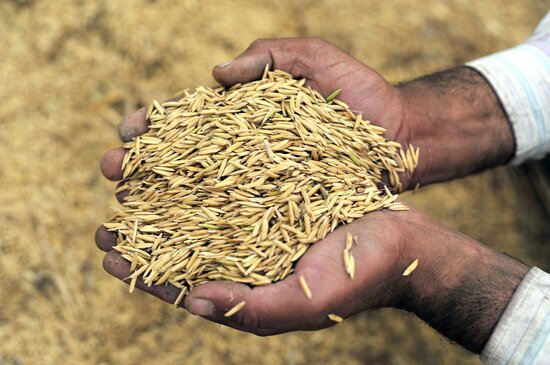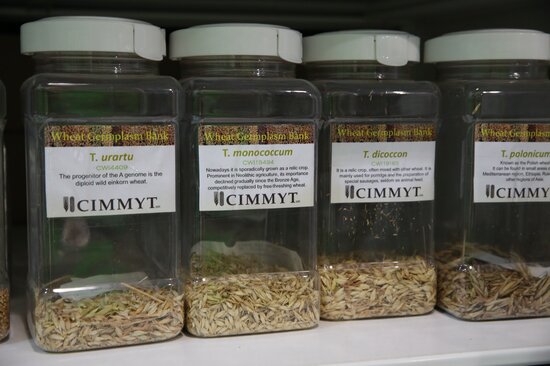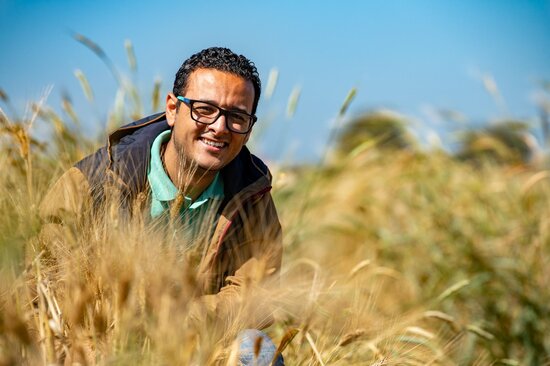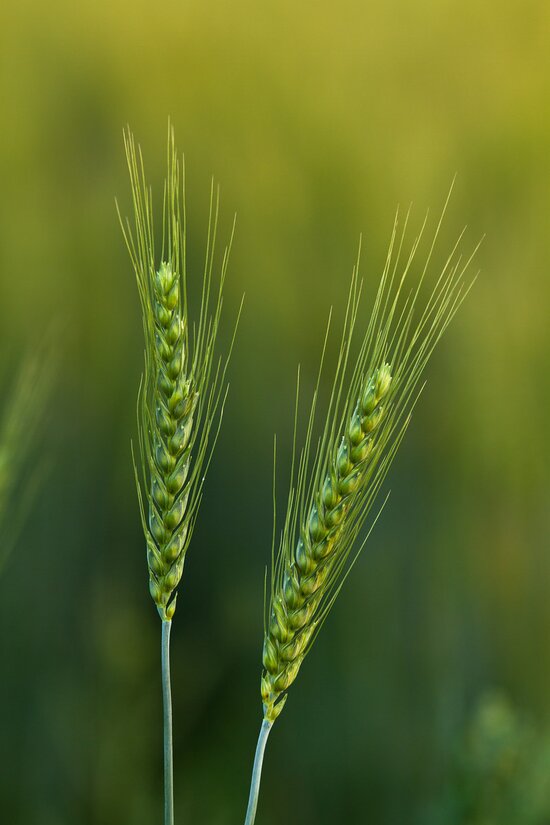A Wild Way to Boost Wheat Yields
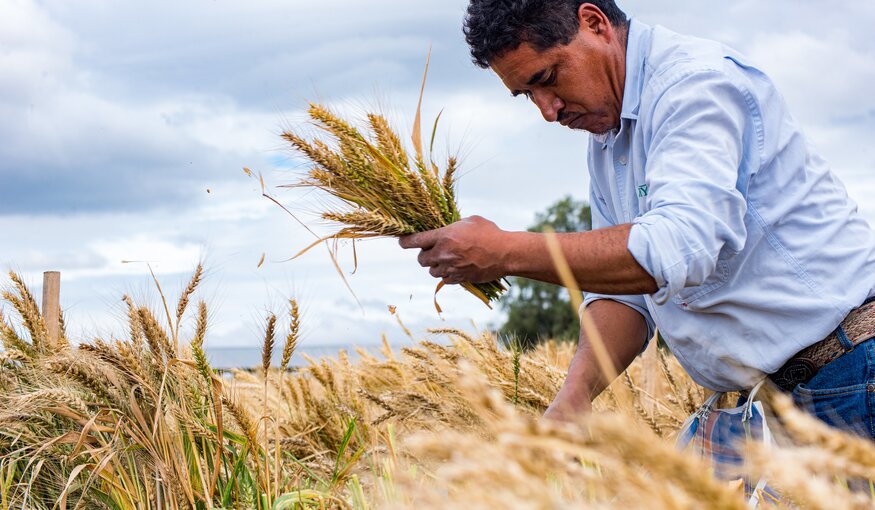 A field technician harvests wheat at CIMMYT's El Batan experimental station. Photo: Alfonso Cortés/CIMMYT
A field technician harvests wheat at CIMMYT's El Batan experimental station. Photo: Alfonso Cortés/CIMMYT31 March 2021
In the face of climate change, improving wheat varieties is essential to maintain yields—and genebanks are at the center of the process, a new study shows.
Published in a special issue of the journal Food Security, the study used large-scale datasets to trace the transfer of the genetic material in goat grass, a wild relative of wheat, into improved wheat varieties.
“We covered all aspects of wheat improvement, from conservation of seeds in genebanks, through to cultivation in farmers’ fields,” said the paper’s lead author, Hafid Aberkane, a senior research assistant at the International Center for Agricultural Research in the Dry Areas (ICARDA). “This highlights the complexity of the process, as well as the concrete contribution of goat grass, and genebanks, to wheat improvement.”
The research focused on the work of the International Maize and Wheat Improvement Center (CIMMYT) genebank, which holds more than 150,000 wheat accessions, the world’s largest collection of a single crop.
In particular, the study captured the genebank’s roles in providing plant genetic material for both pre-breeding and breeding and in distributing germplasm around the world.
The research was conducted as part of the 2018 Genebank Impacts Fellowship Program, which was established by the Crop Trust and the CGIAR Genebank Platform with the aim of building the evidence base on the value of genebanks.
“While the total economic value of wheat collections in genebanks is virtually impossible to estimate, we do know that most of that value comes from the use of accessions in wheat genetic improvement,” said Crop Trust agricultural economist Nelissa Jamora. Her article on valuing genebanks, co-authored with Melinda Smale of Michigan State University, introduces the Special Issue. “This study shows that there is great value in conserving crop wild relatives for pre-breeding as part of this improvement process.”
What Makes Goat Grass Great
Goat grass (Aegilops tauschii) is a wild relative of bread wheat. It is not eaten by humans, but it includes genes that confer to its domesticated descendant resistance to various pests and diseases, as well as higher yield and tolerance to abiotic stresses.
Scientists have crossed goat grass with durum wheat to develop synthetic hexaploid wheat (SHW), a bread wheat that serves as a “bridge” for transferring desirable traits from both goat grass and durum wheat into elite bread wheat varieties.
“SHW is a way to introduce the diversity from goat grass, which provides a valuable reservoir of traits that can be used for improvement,” Aberkane said. “Widening the genetic base is crucial for breeding programs in uncertain times.”
With climate change, diseases and pests all affecting yields, plant breeders require access to diverse genetic resources in order to select traits and develop wheat varieties that can adapt to emerging threats.
“Using goat grass is one of the most effective ways to increase diversity, and also improve the wheat’s resilience, whether to climate change or to pests and diseases,” Aberkane said.
Concrete Contributions of the Genebank
In tracing the long, complex process of genetic improvement of wheat, the study shows that the CIMMYT genebank contributes in several ways.
When it comes to conservation, Aberkane identifies two roles of the genebank.
“First, the genebank conserves the raw material, the goat grass, that is used in pre-breeding, and, second, it conserves the pre-breeding product too, which in this case is the synthetic hexaploid wheat. Which means it contributes at two levels to wheat improvement,” he said.
The genebank also distributes this genetic material upon request. The study found that more than 1,500 SHWs were developed by scientists, and the derivatives represented 21 percent of the germplasm distributed by the CIMMYT genebank between 2000 and 2018.
Aberkane also identified an additional value of genebanks beyond their core roles in conservation and distribution: the body of knowledge that they generate and make publicly available.
“When you go to farmers to collect landraces, you are also collecting knowledge of how they are using them, and their purposes for keeping them in their fields. In genebank operations, when you are evaluating the germplasm, you are also generating additional information,” he said.
The multiple contributions of the genebank, as shown by the study, indicate just how many people around the world benefit from its work, Aberkane notes.
“Everyone should realize that there are institutions that are dedicated to keeping crop diversity safe and making it available, to help us all face whatever the future brings,” he said.
This article was originally published on the CGIAR Genebank Platform website.
The CGIAR Genebank Platform, which ran from 2017 to the end of 2021, supported CGIAR Research Centers to fulfill their legal obligation to conserve and make available 750,000 seed samples of crops and trees on behalf of the global community under the International Treaty on Plant Genetic Resources for Food and Agriculture. The Platform supported day-to-day genebank operations, and activities to improve efficiency, enhance use and ensure compliance with international policy. This work was supported jointly by donor contributions to the CGIAR Fund and the Crop Trust Endowment Fund.
Categories: Genebank Platform, Genebanks, Wheat, Food Security

